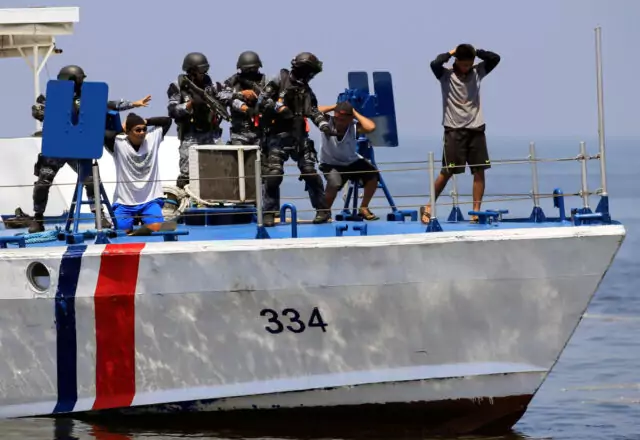

The Philippine Coast Guard during a mock exercise. (Source: VnExpress)
Executive Summary
Executive Summary
- In the last decade, Philippine naval forces have successfully neutralized Abu Sayyaf’s once significant piracy operations in the maritime area between Mindanao, Philippines and Sabah, Malaysia.
- This is due in no small part to regional cooperation and joint anti-piracy efforts by the Philippines, Malaysia, and Indonesia, possibly offering a model for other piracy-prone areas around the world.
One of the more recent major incidents of Abu Sayyaf-related piracy occurred in 2016, when a German couple yachting in the waters between Mindanao and Sabah were attacked by Abu Sayyaf. A 70-year old man was abducted and his partner was shot and killed in an attempt to resist the kidnapping (The Maritime Executive, November 9, 2016). The yachter had previously been abducted by Somali pirates in 2008, paying a ransom to escape. Despite this track record, Abu Sayyaf beheaded the German after he failed to pay his ransom after only a few months (Al Jazeera, February 27, 2017). In numerous other cases, however, Abu Sayyaf received large ransoms. The group reportedly received several millions of dollars each year in ransom money from its piracy operations, which funded the group’s terrorist attacks elsewhere in the Philippines (The Maritime Executive, October 28, 2016).
In 2020, Philippine naval forces conducted an “all-out” campaign against Abu Sayyaf and killed seven of its members at sea (Al Jazeera, November 16, 2020). This caused a decline in Abu Sayyaf’s piracy operations, but it was believed at the time that this degrading of the group’s capabilities was only temporary (Benar News, July 29, 2020). Nonetheless, three years later, the Singapore-based anti-piracy monitoring group known as the Regional Cooperation Agreement on Combating Piracy and Armed Robbery (ReCAAP) recommended that the threat of kidnapping in the Sulu Sea be downgraded from “moderate” to “moderate low.” ReCAAP credited this to Philippine and Malaysian efforts to combat Abu Sayyaf in the area (The Philippine Star, January 11). More recently, the Philippines, Malaysia, and Indonesia celebrated the successful elimination of high-seas kidnapping since 2021, a trend that continues to this day (South China Morning Post, March 29, 2022).
Regional cooperation between the Philippines, Malaysia, and Indonesia demonstrates how piracy can be curtailed, if not necessarily eradicated. In contrast, the escalating Houthi and Somali hijackings and the former’s missile attacks on ships in the Red Sea shows how a lack of international coordination and regional instability can cause rapid increases in piracy. For example, Somali pirates successfully seized two ships in December 2023 (thenationalnews.com, January 10). While the United States and its allies are patrolling the Red Sea and striking Houthi bases in Yemen, tensions remain at a record high in the waterway (FreightWaves, December 22, 2023; US Department of Defense, December 18, 2023). The Southeast Asian states’ counter-piracy cooperation with the Philippines can, therefore, serve as a template for similar operations elsewhere in the world, notwithstanding the different geopolitical contexts.
https://jamestown.org/program/brief-maritime-threat-posed-by-abu-sayyaf-curtailed-by-philippine-counter-piracy-efforts/

No comments:
Post a Comment
Note: Only a member of this blog may post a comment.